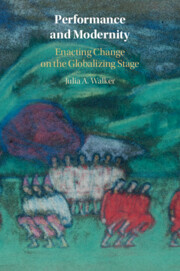Chapter 5 - Air Conditioning
Psychological Realism and the Circulation of “Cool”
Published online by Cambridge University Press: 09 December 2021
Summary
Noting that theatres were among the first public buildings to install air-cooling technology, Chapter 5 demonstrates how cold compressed air helped audiences engage with actors whose gestural restraint marked the “cool” style of psychological realism. Historicizing mid-twentieth-century models of self, it shows how air conditioning helped facilitate cross-racial identification by priming audiences to project themselves into the enigmatic interiority of characters that were rendered through psychological-realist techniques. With a focus on Marcel Camus’s 1959 film Orfeu Negro, it demonstrates how Marpessa Dawn and Breno Mello’s psychological-realist acting helped white audiences identify with their Black characters and reject habituated (racist) ways of looking at Black bodies that were also encoded in the film. Paradoxically, it finds that, even as they were sealed within the contours of their own air-cooled skin, individual white audience members could imaginatively experience a sense of self not premised on the socially symbolic barrier of skin, and were thus conditioned to respond as an intersubjective “thou” to the “I” of Black liberationists in this moment of Civil Rights advocacy and postcolonial struggles throughout the American and Global South.
- Type
- Chapter
- Information
- Performance and ModernityEnacting Change on the Globalizing Stage, pp. 203 - 248Publisher: Cambridge University PressPrint publication year: 2022
- 1
- Cited by

